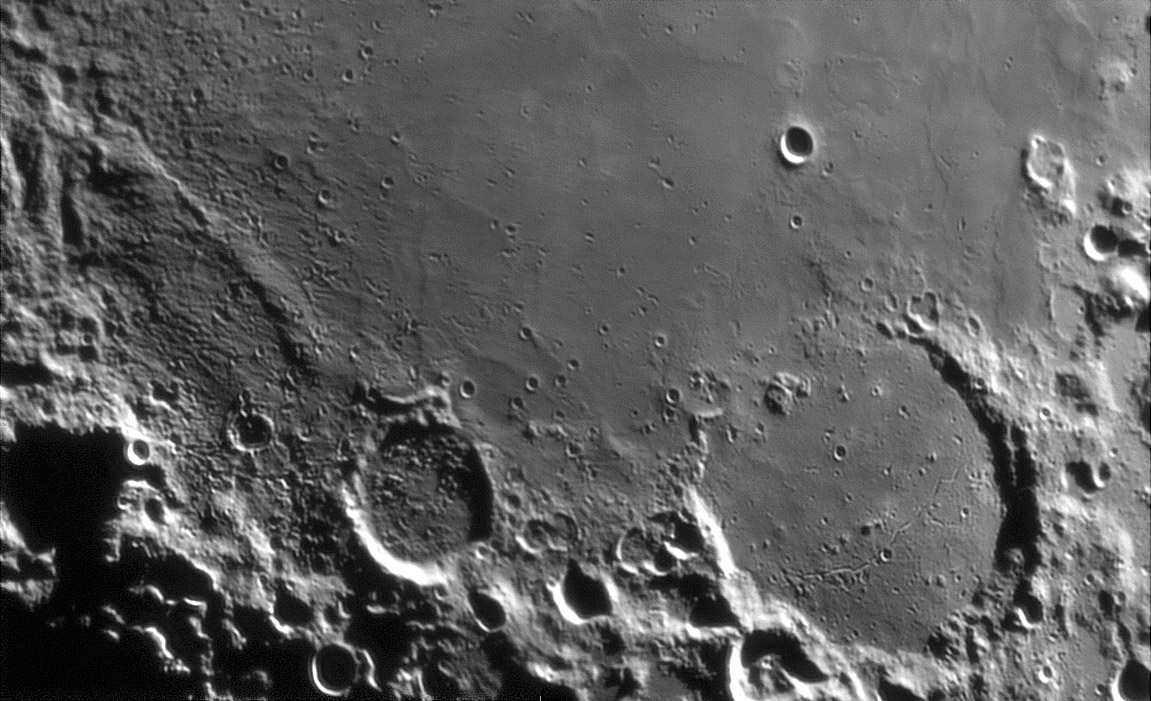
image by Jérôme Grenier
42 years ago I sent Gilbert Fielder, the famed lunar scientist from England, a postcard pointing out an odd crater pair, now beautifully seen on Jérôme’s image. Gilbert responded: Many thanks for your postcard of February 18th drawing my attention to the two small rings between Fracastorius and Beaumont. Yet another beautiful example of lunar volcanism of the ring-fracture type! This crater pair is just east (right) of Beaumont and part of each crater’s rim cuts the other rim. Very perplexing, and in 1965 strong evidence for volcanism. Add that to the three-leaf crater (not clover) on the northeast rim of Fracastorius and volcanism seemed to be everywhere. But today, and for the last 30 years, both of these odd multiple craters would be interpreted as basin secondary impact craters, probably coming from distant Imbrium. The cluster of four overlapping craters just beyond Fracastorius’ western rim is most likely more secondaries. In 1965, basin secondaries were not yet recognized and Gilbert’s idea of volcanism for at least peculiar craters seemed reasonable. Oh yes, did you notice that the westernmost of the interlocking craters is a concentric crater? I included it in my 1975 list, but now I realize that if it really is a basin secondary, then the crater itself is an impact. On Jérôme’s image the other interlocker has a weird sort of possible concentric ring, and another concentric-type rim occurs in Beaumont A (just to the west). Somehow, this is a region that favors formation of inner rings!
Technical Details:
22 April 2007, 20:48 UT. Orion Optics (UK) OMC 12″ + barlow 2x + IR pass filter; stacked in Registax. I have enhanced this image slightly differently than Jérôme did.
Related Links:
Rükl chart 58
Jérôme’s website
COMMENTS?
Register, and click on the Discussion tab at the top of the page.



